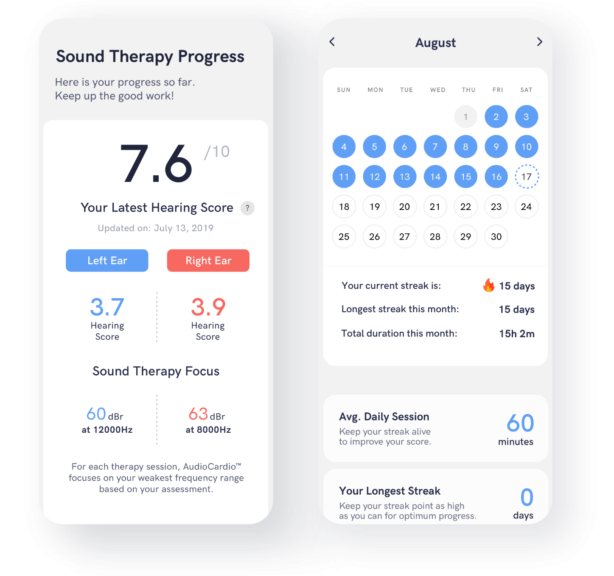
The Benefits of Sound Conditioning for Your Hearing
Sponsored
There is a growing body of evidence supporting low-level stimulation therapies to help individuals with chronic conditions ranging from PTSD and vision issues to allergies and hearing loss.
This article shares insights on the theory behind low-level stimulation for hearing and highlights the work of one such company that hopes to help you protect and improve your hearing in a safe and non-invasive manner.
Brain Plasticity
Neuroplasticity, commonly known as brain plasticity, is the idea that the brain can change and adapt by forming new connections throughout our lives. This allows cells in the brain to compensate for environmental changes, as well as disease and injury. These adaptations of establishing connections or forming new neural pathways allow us to accomplish intended functions. And the more we support these pathways by doing that task, the easier it becomes to accomplish.
Think about the first time you drove to a new job. You probably needed directions to get to your destination, places to park and even how to get to your desk or workstation. You may need to follow those directions a few more times or reference a map, but over time, it becomes second nature—automatic.
Our cells remember these pathways in the brain too. They have an incredible “memory.” Coded with decades, generations and centuries of adaptations to environments, disease and injury.
Researchers and scientists have found that by repeatedly doing something over and over, you can rewire your brain to help create and reactivate pathways to support brain plasticity.
If You Don’t Use It, You Lose It
The brain changes as you develop new skills. Intuitively, you know that something is happening, something is changing in the brain as you develop these skills and improve others.
This development of abilities and acquisition of new skills rewires the brain. It memorializes and remembers the details necessary to acquire or perform that skill or task.Take for instance, someone who has never played the guitar and has no musical background. As they learn and acquire this new skill, changes are taking place in the brain since there was no previous blueprint for knowing how to play the guitar. The continuous development of this skill maps out the various pathways necessary to complete the functions necessary to play the guitar.
However, the reverse could be said about an ability that you no longer use or use less frequently. As you stop using a certain skill or even a sense, those pathways begin to diminish and connections between cells can break down, making it more difficult to accomplish that task.
Supporting abilities that you have acquired throughout your life require maintenance through practice, repetition, and use.
AudioCardio: The What and How
AudioCardio is a hearing wellness company that develops products utilizing their patented Threshold Sound Conditioning technology in hopes of helping individuals suffering from sensorineural hearing loss (age-related, noise induced, disease, ototoxicity) and tinnitus (ringing in the ears). The AudioCardio mobile app generates a personalized and barely audible sound therapy designed to maintain and improve your hearing.
AudioCardio’s Threshold Sound Conditioning technology has been clinically proven to be effective and significant with Stanford University, Palo Alto Medical Foundation and Samsung Medical Center.
AudioCardio works by providing a hearing assessment to identify damaged frequencies to calibrate your personalized sound therapy. By identifying the minimum volume level where you can hear the tones being played (threshold), the AudioCardio sound therapy will stimulate the cells responsible for transmitting sound to the brain by repeatedly playing those frequencies just below your threshold or cusp of sound. This stimulation aims to help promote and support the cells’ ability to “activate” and connect to nearby cells. Through continuous and repetitive stimulation, AudioCardio hopes to help these cells remember the best way to complete their function of delivering signals to the brain so you can recognize them as sound.
Supporting Research
AudioCardio’s Threshold Sound Conditioning technology has been validated through multiple clinical studies, including a double-blind randomized controlled study with Stanford University. More than 75% of the participants in the Stanford study had a significant change in their hearing within three weeks following the study protocol. You can find the study abstract in Neurology, the most widely read and highly cited peer-reviewed Neurology journal here. You can also find the full study published in the U.S. National Library of Medicine here.
More research is being conducted on the various ways we can use low-level stimulation to improve a variety of chronic health issues. And although not all of it is conclusive, this gives us hope that less invasive, more accessible health and wellness solutions will become available now and in the future.
Learn more about low-level stimulation for your hearing at https://www.audiocardio.com.